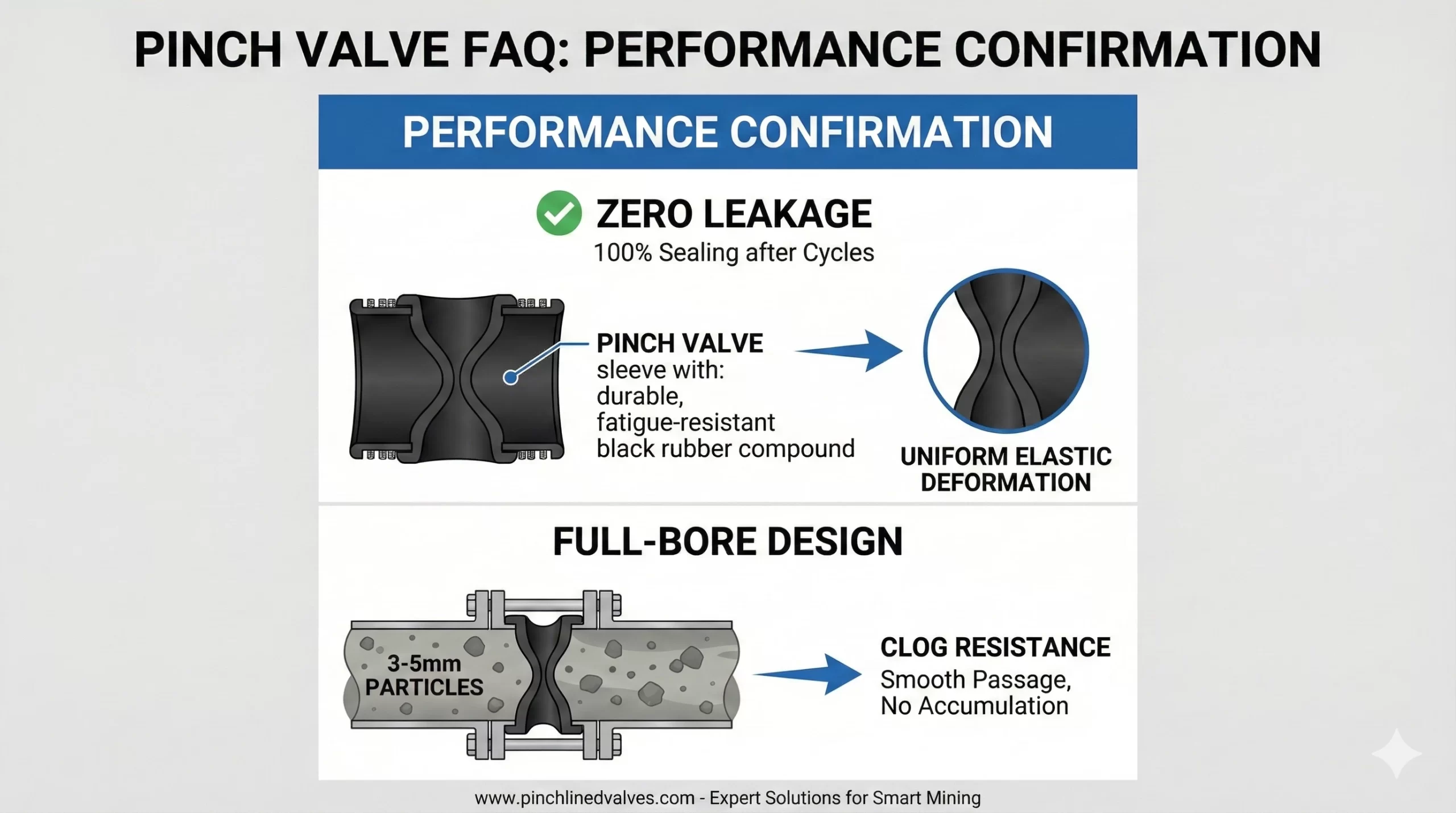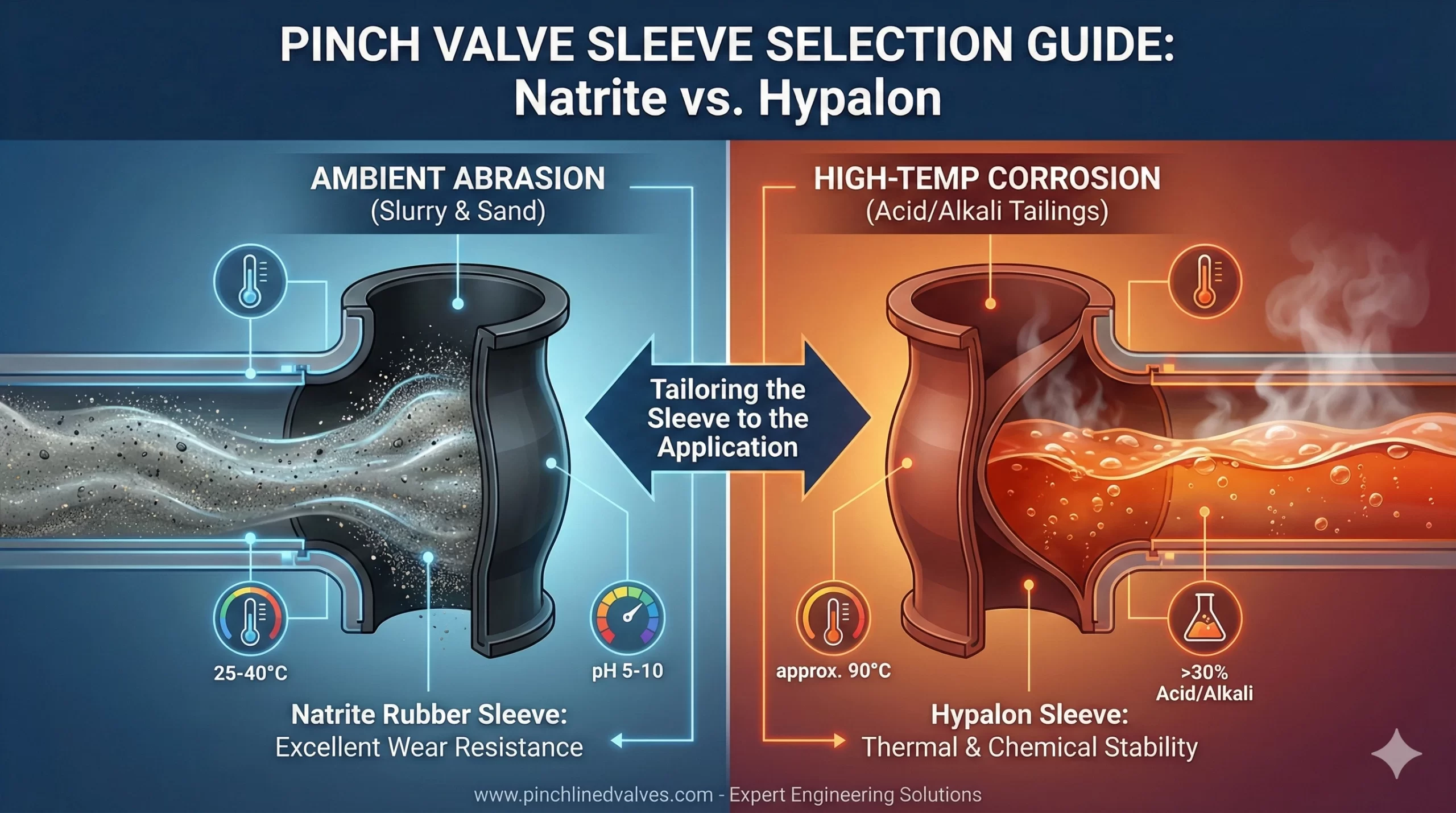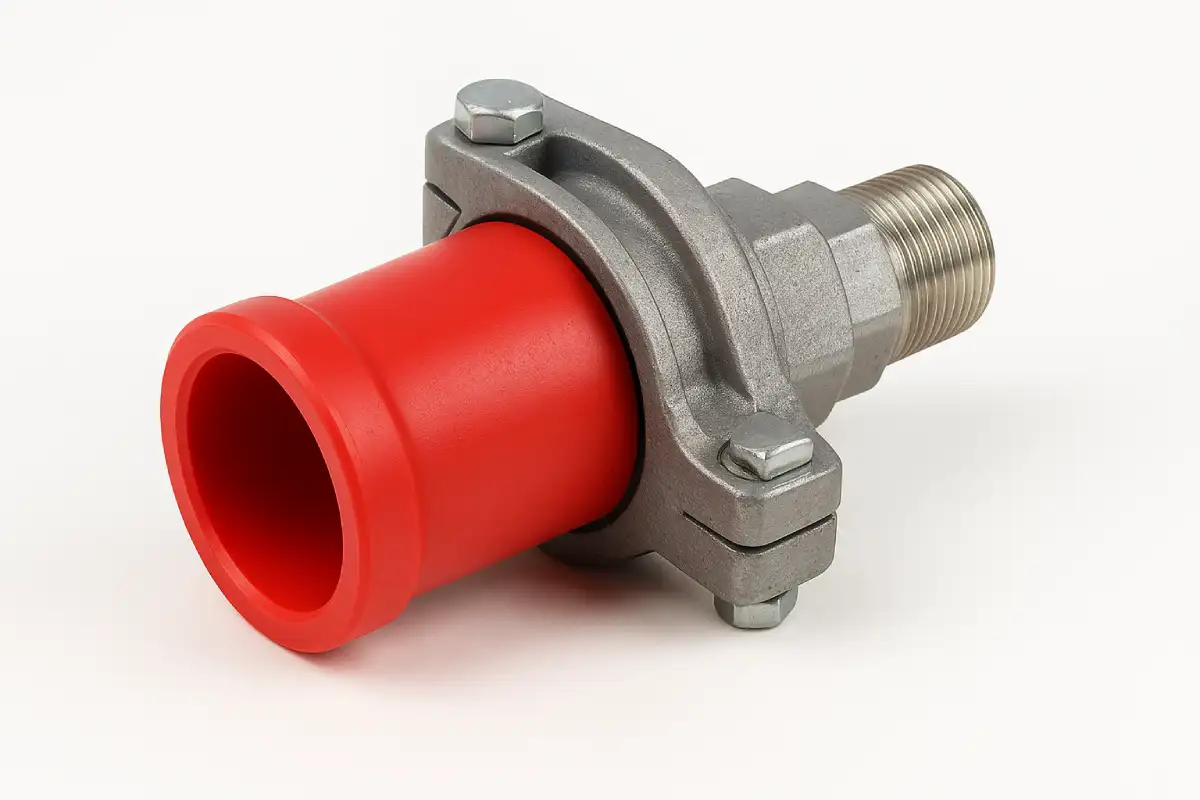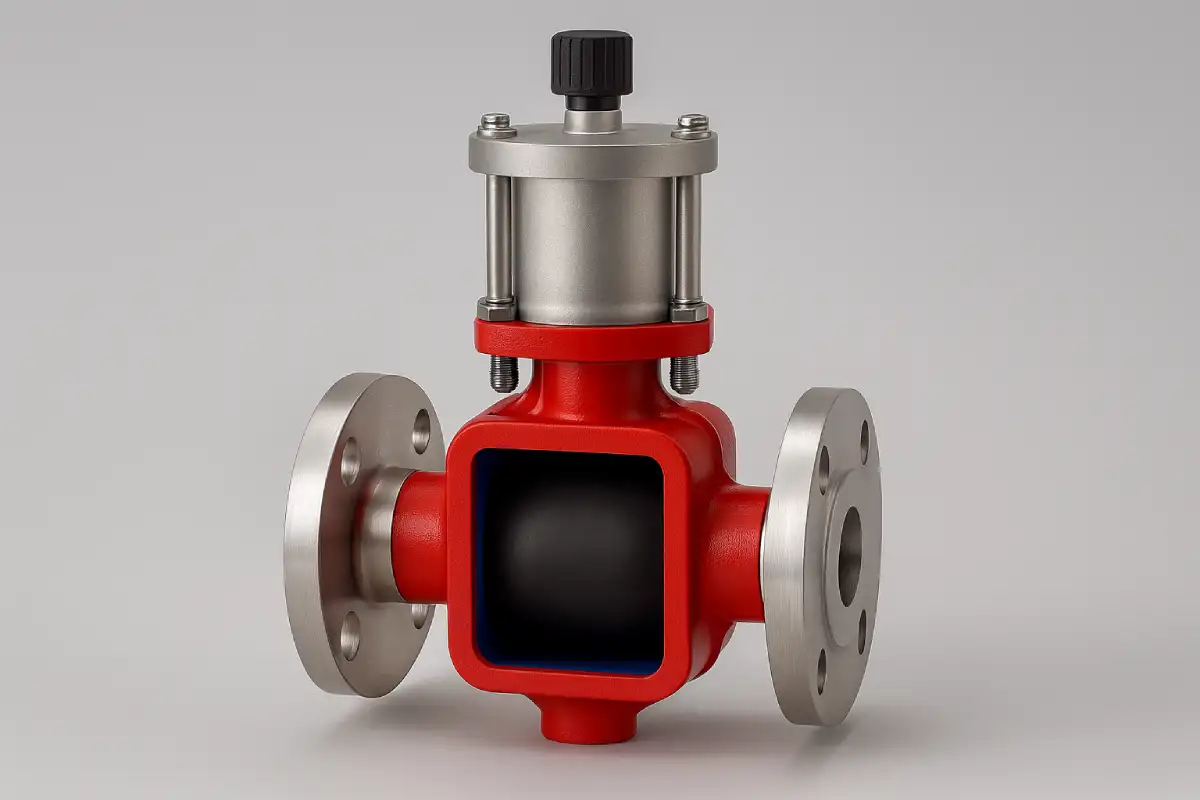

Pinch valves control the flow of abrasive or corrosive slurry materials because of their flexible sleeve design and unobstructed flow path.
Slurries—mixtures of solids suspended in a liquid—are common in industries like mining, wastewater treatment, and chemical processing.
These materials are often abrasive, viscous, or chemically reactive, which makes traditional valve types prone to wear or clogging.
This is where pinch valves excel, offering a low-maintenance, long-lasting solution specifically suited to challenging fluid control scenarios.
A pinch valve is a flow control device that uses a flexible elastomer sleeve as its key component.
This sleeve is “pinched” from the outside—either manually or using pneumatic or electric actuation—to restrict or stop the flow of material through the valve.
The core advantage of this design is that the fluid or slurry never comes into contact with any part of the valve body except the sleeve.
This makes pinch valves ideal for managing abrasive and corrosive slurries, as well as solids-laden or high-viscosity flows.
Slurries place a unique set of demands on any fluid control device:
Conventional valve types—like ball valves, butterfly valves, or gate valves—have internal metal components that are vulnerable to these issues.
In contrast, pinch valves offer a clean, clear path for slurry to pass through and only expose the flow to the sleeve material, which is chosen for compatibility with the slurry.
Pinch valves function by collapsing or “pinching” the sleeve to reduce or halt flow.
When in the open position, the sleeve is fully expanded, offering minimal resistance and a straight, unobstructed passage—ideal for handling thick, particle-heavy slurries.
As pressure is applied externally, the sleeve collapses inward and compresses the slurry, restricting flow until it eventually stops.
This gentle, non-mechanical pinching action minimizes wear and reduces the likelihood of damaging particles getting trapped or grinding between valve components.
For slurry applications, this translates into improved longevity, lower maintenance, and fewer unexpected breakdowns.
Pinch valve sleeves are available in durable materials like natural rubber, EPDM, or nitrile that withstand frequent exposure to abrasive materials.
The open position creates no internal obstructions, reducing pressure drop and preventing solids from accumulating.
Only the sleeve comes into contact with the fluid, so the valve body remains protected—ideal for chemical slurries.
Because there are no internal moving parts within the flow path, pinch valves rarely suffer from internal clogging or mechanical failure.
When fully pinched, the valve offers bubble-tight sealing, which helps contain hazardous or messy slurry materials securely.
The performance of a pinch valve depends heavily on the sleeve.
The elastomer must be selected to match the slurry’s characteristics, such as its temperature, pressure, particle size, and chemical composition.
Natural rubber is often used for general-purpose slurries, while EPDM or silicone may be selected for high-temperature or chemically aggressive applications.
Routine inspection and timely replacement of the sleeve are essential for long-term reliability, especially in high-wear environments.
Fortunately, sleeve replacement is straightforward and doesn’t require full valve removal, further minimizing downtime.
Pinch valves used in slurry applications are generally installed horizontally to ensure smooth flow and even wear.
It’s also important to match the valve size precisely to the pipeline diameter to avoid bottlenecks or inefficient throttling.
Pneumatic pinch valves are commonly preferred in industrial applications because they offer fast, responsive control with minimal manual effort.
These air-operated designs work by inflating or deflating a diaphragm or pressure chamber surrounding the sleeve.
In automated systems, pinch valves can also be connected to flow sensors or programmable logic controllers (PLCs) for precise flow regulation based on changing system demands.
Pinch valves are widely used across many sectors that handle slurry or other abrasive mixtures:
Pinch valves offer a smart, cost-effective, and low-maintenance solution for controlling slurry flow in demanding industrial settings.
Their simple design, resistance to wear, and reliable sealing performance make them a clear choice over traditional valve types in slurry-heavy systems.
By understanding what a pinch valve is, how it operates, and why it excels in slurry applications, operators can make better choices that extend equipment life, improve safety, and reduce maintenance costs.
Resources:
Pinch Valve – A Flow Control Valve Used in Slurry Application
Why Pinch Valves Are The Used For Slurry Control Application
Control Pinch Valves: Mining Slurry Handling and Piping
Process Automation Valves: Control valves for slurry service

Question 3:Performance Confirmation:Your documentation mentions “zero leakage” and “clog resistance.” We would like to confirm: After long-term operation, will repeated compression cycles cause sleeve fatigue leading to sealing failure? Is the full-bore design truly effective for slurries with larger particles (e.g., 3-5mm)? Answer 3:Confirmation of “Zero Leakage” and “Clog Resistance” Performance (1)Zero Leakage Reliability: Our […]

Material Selection:We are dealing with different working conditions: (1)Question1: Condition A: Ambient temperature (approx. 25-40°C) slurry containing fine sand, where wear resistance is the primary consideration, with weakly corrosive media (pH 5-10). Answer1:(ambient temperature, fine sand, low concentration corrosion, high wear resistance): Preferred recommendation: Natrite Rubber sleeve. Reason: The core advantage of Natrite Rubber lies in its […]

A pinch valve adapter connects a pneumatic pinch valve or manual valve to pipes, tubes, or other parts of a system. With this connector, the valve can manage liquid or gas flow without leaks or strain. It also lets the valve fit in tight or unusual setups. This reduces operational risks and improves overall performance. […]

Yes, they are. Hygienic pinch valves are specially designed to keep things clean and safe, which is why they’re so common in food, pharmaceutical, and biotech environments. Their smooth interior and dead-zone-free design make cleaning quick and reliable. And if the term is new to you, don’t worry, this article will walk you through what […]



